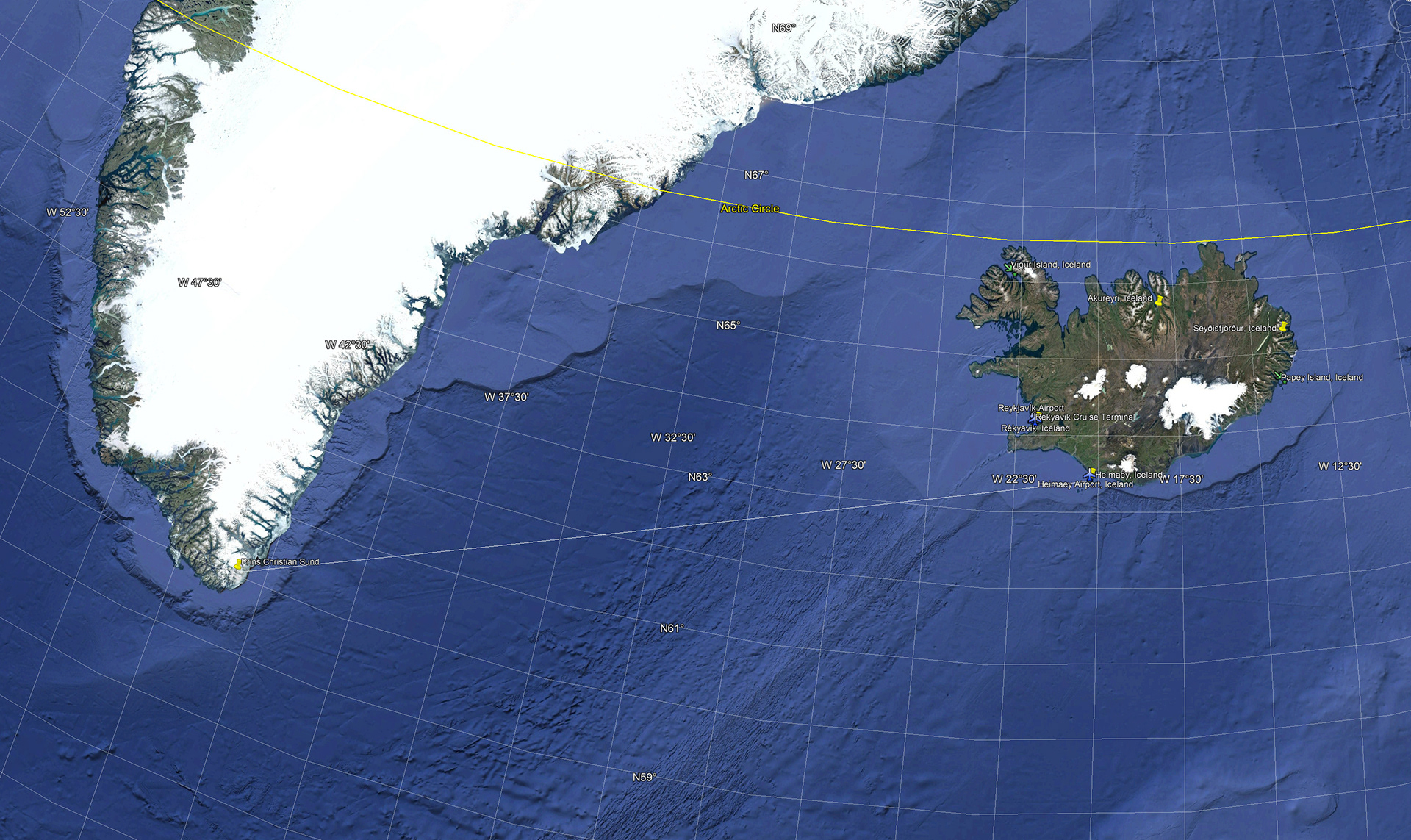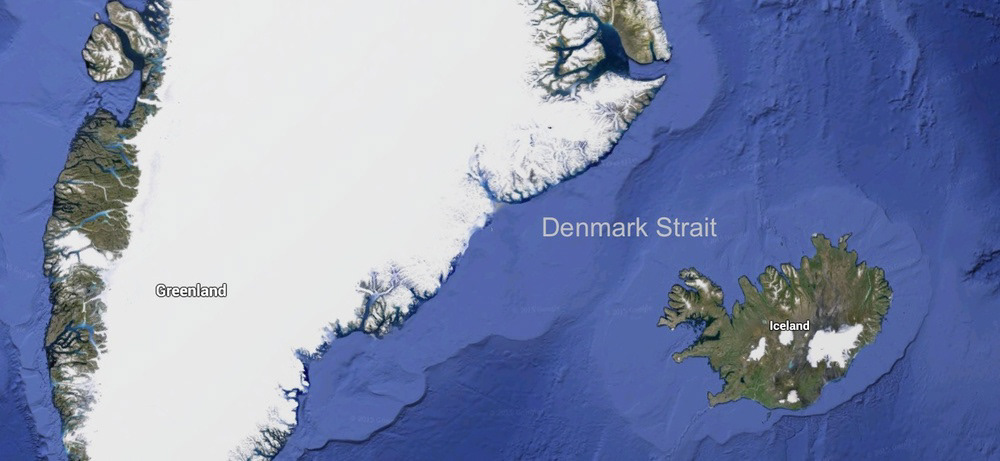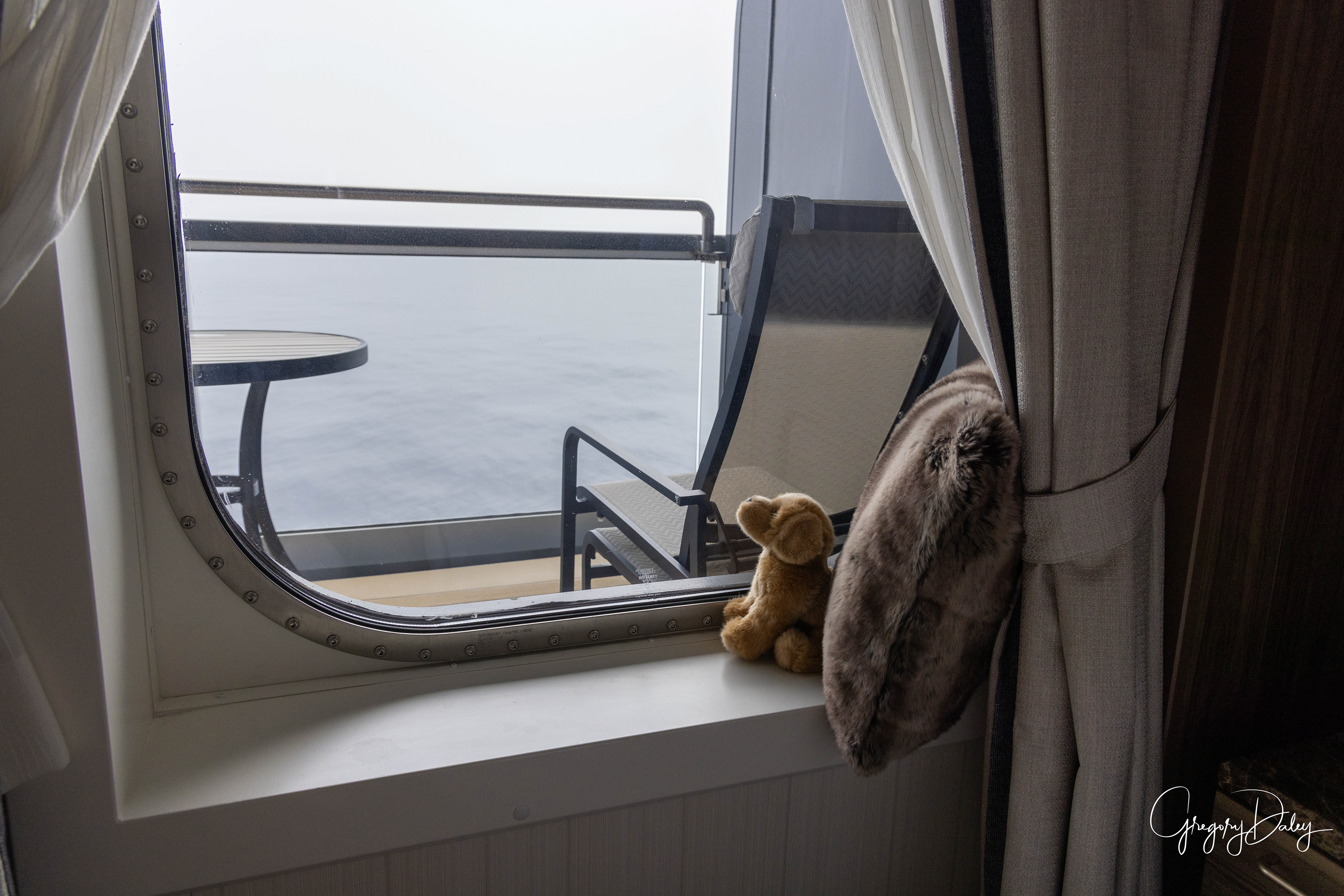


Denmark Strait, en route to Prins Christian Sund, Greenland
Sunday, 7/9/23
Latitude: 61.47° Longitude: -33.81°
The day at sea was spent crossing the 700 nautical miles of the Denmark Strait to the Prins Christian Sund. Long ago, during the Viking era, Norsemen and women sailed the same part of the ocean. Eric the Red paved the way for a Norse settlement in southeast Greenland, naming the land in an adequate manner after spending approximately four months searching for the perfect spot. Greenland is indeed green in certain areas, and Seabourn Venture was bound on a similar quest to explore the same land that Eric The Red and the early settlers once called home.
During the sea day together, we listened to Conversations in the Discovery Center from Jon Sigurdsson about Greenland and its peoples, the evolution of the kayak by Rob Egelstaff, and stories about the Vikings by Seb Coulthard. These Conversations enriched our experiences and share knowledge to help explore and interpret these remote regions of the world.
Days at sea also serve as a time to relax and disconnect from the outside world. These are contemplative days. It's truly being on holiday.
Greenland Background
Greenland is an island country in North America and part of the Kingdom of Denmark. It lies between the Arctic and Atlantic oceans, east of the Canadian Arctic Archipelago. Greenland is the world's largest island. It is one of three countries that form the Kingdom of Denmark, the others being Denmark and the Faroe Islands; the citizens of all these countries are citizens of Denmark and of the European Union. The capital of Greenland is Nuuk.
Though a part of the continent of North America, Greenland has been politically and culturally associated with Europe (specifically Norway and Denmark, the colonial powers) for more than a millennium, beginning in 986. Greenland has been inhabited at intervals over at least the last 4,500 years by Arctic peoples whose forebears migrated there from what is now Canada. Norsemen settled the uninhabited southern part of Greenland beginning in the 10th century, having previously settled Iceland. Inuit arrived in the 13th century. Though under continuous influence of Norway and Norwegians, Greenland was not formally under the Norwegian crown until 1261. The Norse colonies disappeared in the late 15th century, after Norway was hit by the Black Death and entered a severe decline.
In the early 17th century, Dano-Norwegian explorers reached Greenland again. When Denmark and Norway separated Greenland became Danish in 1814 and was fully integrated in the Danish state in 1953 under the Constitution of Denmark, which made the people in Greenland citizens of Denmark. In 1979, Denmark granted home rule to Greenland; in 2008, Greenlanders voted for the Self-Government Act, which transferred more power from the Danish government to the local Greenlandic government. Under the new structure, Greenland has gradually assumed responsibility for a number of governmental services and areas of competence. The Danish government retains control of citizenship, monetary policy, and foreign affairs, including defense. Most residents of Greenland are Inuit. The population is concentrated mainly on the southwest coast, and the rest of the island is sparsely populated. Three-quarters of Greenland is covered by the only permanent ice sheet outside Antarctica. With a population of 56,081, Greenland is the least densely populated region in the world. 67% of its electricity production comes from renewable energy, mostly from hydropower.
Greenland Background
Greenland is an island country in North America and part of the Kingdom of Denmark. It lies between the Arctic and Atlantic oceans, east of the Canadian Arctic Archipelago. Greenland is the world's largest island. It is one of three countries that form the Kingdom of Denmark, the others being Denmark and the Faroe Islands; the citizens of all these countries are citizens of Denmark and of the European Union. The capital of Greenland is Nuuk.
Though a part of the continent of North America, Greenland has been politically and culturally associated with Europe (specifically Norway and Denmark, the colonial powers) for more than a millennium, beginning in 986. Greenland has been inhabited at intervals over at least the last 4,500 years by Arctic peoples whose forebears migrated there from what is now Canada. Norsemen settled the uninhabited southern part of Greenland beginning in the 10th century, having previously settled Iceland. Inuit arrived in the 13th century. Though under continuous influence of Norway and Norwegians, Greenland was not formally under the Norwegian crown until 1261. The Norse colonies disappeared in the late 15th century, after Norway was hit by the Black Death and entered a severe decline.
In the early 17th century, Dano-Norwegian explorers reached Greenland again. When Denmark and Norway separated Greenland became Danish in 1814 and was fully integrated in the Danish state in 1953 under the Constitution of Denmark, which made the people in Greenland citizens of Denmark. In 1979, Denmark granted home rule to Greenland; in 2008, Greenlanders voted for the Self-Government Act, which transferred more power from the Danish government to the local Greenlandic government. Under the new structure, Greenland has gradually assumed responsibility for a number of governmental services and areas of competence. The Danish government retains control of citizenship, monetary policy, and foreign affairs, including defense. Most residents of Greenland are Inuit. The population is concentrated mainly on the southwest coast, and the rest of the island is sparsely populated. Three-quarters of Greenland is covered by the only permanent ice sheet outside Antarctica. With a population of 56,081, Greenland is the least densely populated region in the world. 67% of its electricity production comes from renewable energy, mostly from hydropower.